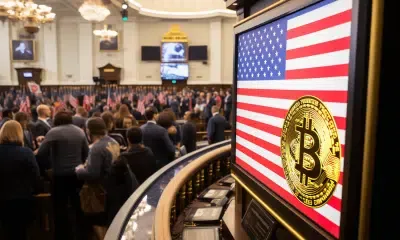
Many wonder who’s really in charge of Pi Network. This mobile crypto-mining project has pulled in a huge global crowd, but figuring out its ownership and control isn’t straightforward. Pi Network talks a big game about decentralization. Yet, if you dig into its company setup, who started it, and how it runs day-to-day, you find a tighter grip at the top, especially now during its “Enclosed Mainnet” stage.
The Legal Labyrinth: SocialChain Inc. and Pi Community Company
SocialChain Inc. spearheads Pi Network’s creation; they’re a tech startup from Silicon Valley, officially formed in California back in 2018. California state documents, like a Statement of Information Corporation, name Dr. Chengdiao Fan as the head honcho—CEO, Secretary, and CFO—of SocialChain Inc. Dr. Nicolas Kokkalis stands out as another crucial figure in its founding.
SocialChain Inc.’s main given address in Sunnyvale looks like one of those co-working spots, and their Palo Alto mailing address actually points to a UPS store. Nobody seems to agree on how many people work there; some say about 16, others claim SocialChain has roughly 35 to 40 folks dedicated to Pi Network. Because SocialChain Inc. isn’t public, you won’t find their financial details spread out for everyone to see. SocialChain Inc. lays down the rules in Pi Network’s Terms of Service, which importantly lock users into binding arbitration and make them give up class action rights.
Then there’s Pi Community Company, a name that pops up often in connection with the project. This company says it’s all about crafting a decentralized tomorrow, and if you check the fine print for the Pi Network Developer Ambassador Program, it groups “Pi Community Company and SocialChain Inc.” together as the “Company.” Word is Pi Community Company got its start on November 25, 2019, with its business focus being “application software publishing.” It’s a bit fuzzy where exactly Pi Community Company was officially set up, but its close relationship with SocialChain Inc. points to a major US hub for its operations.
Tracxn, a company info site, also flags a “Pi Network Inc.” that supposedly started way back on November 5, 2014, but how that connects to the Pi Network Drs. Kokkalis and Fan kicked off isn’t fully understood.
You’ve got to be careful not to mix these up with other outfits using similar names elsewhere, like “PI DIGITAL MEDIA NETWORK PRIVATE LIMITED” over in India or “PI NETWORK TECHNOLOGIES LIMITED” in the UK; those seem to be totally different businesses from this US-based crypto venture.
The Founders’ Stake: Equity, Control, and Tokenomics
A group from Stanford University got Pi Network off the ground, and Dr. Nicolas Kokkalis along with Dr. Chengdiao Fan are the names you hear most. There was another co-founder, Vincent McPhillip, who looked after the community, but he’s not part of the project anymore.
Holding a Stanford Ph.D. and having done postdoc work in Computer Science on distributed systems and how people use computers, Dr. Nicolas Kokkalis now leads the tech side of Pi Network. He even taught the very first class on decentralized apps (CS359B) at Stanford. His earlier ventures included work with StartX and starting up Gameyola Inc.
Dr. Chengdiao Fan, another Stanford Ph.D. graduate, delved into anthropological sciences, particularly how human behavior intersects with social computing. She’s now Pi Network’s Head of Product, using her background to make the platform better for users and to find ways blockchain can be used for more than just money.
Just how much of SocialChain Inc. or Pi Community Company each founder personally owns isn’t public knowledge. Still, word on the street is that the founders, by way of their roles at SocialChain, have their hands on a big chunk of all Pi tokens. Some folks figure the founders have about 20 billion Pi tokens from the team’s designated share, and they might also sway what happens with the 10 billion tokens set aside for a Pi Foundation down the line. For now, though, this fortune is mostly theoretical because you can’t officially trade Pi tokens on big public exchanges; they’re stuck inside the Enclosed Mainnet system.
Apparently, Vincent McPhillip left because of clashes inside the project, and these disputes supposedly ended up in court. That court case, it’s said, shed a little light on Pi Network’s money, hinting they got funding from private investors like regular tech companies do, not by selling coins in an ICO.
The plan for Pi’s tokens says there will never be more than 100 billion of them. Official statements say 80% of all tokens are for the community—65 billion as mining prizes, 10 billion for growing the ecosystem through the Pi Foundation, and 5 billion for trading pools—leaving the last 20% (20 billion tokens) for the Core Team. The Core Team can’t get all their tokens at once; they’re released over time based on how much the community mines and moves their coins.
But, some people are worried that too few hands control too many tokens. Digging into the blockchain data, some analysts claim the Core Team actually controls a huge slice of the Pi pie—maybe even 93.6 billion tokens, or about 82.8% (that’s roughly 62.8 billion Pi in six wallets connected to the Core Team, on top of their own 20 billion). This kind of pile-up of tokens in one place makes people nervous about what could happen if Pi starts trading openly, like the possibility of someone rigging the market.
It’s interesting that Pi Network skipped an ICO, choosing instead to get startup money the old-fashioned way using SAFE agreements, which are deals for future shares. Chatter suggests they got early money from venture capital firms like 137 Ventures, Ulu Ventures, and Designer Fund; PitchBook data even says they pulled in $800,000 in a VC deal back in February 2020. The McPhillip lawsuit papers showed $500,000 came in September 2019, and then another $300,000 in February 2020, with the company valued at $20 million both times. They also make a good bit of cash from ads running on the mobile app.
The Pi Core Team: Architects of the Ecosystem
Said to have more than 35 full-timers worldwide, the Pi Core Team is what makes the project tick. With Dr. Kokkalis and Dr. Fan at the helm, this group handles everything from coding software and running the business to making content, managing products, and overseeing digital work.
Pi Network says it follows a “progressive decentralization model,” meaning the plan is to slowly move power from the Core Team’s hands to a system where more people have a say. Right now, the Core Team calls the shots on big-picture stuff like the project’s future plans, when to switch between stages (like Testnet, Enclosed Mainnet, and the hoped-for Open Mainnet), and what it takes to pass KYC/KYB checks. As the tech chief, Dr. Kokkalis likely steers the technical work, which includes their special method for agreement (the consensus algorithm) that’s built on the Stellar Consensus Protocol but tweaked for phone mining.
Money matters, like how resources and ad money are handled, are also up to the Core Team. There’s a plan for a future Pi Foundation to look after the 10 billion tokens set aside for helping the community and the project grow.
Governance: Stated Ideals vs. Observed Reality
On paper, Pi Network promises it will eventually be decentralized and run by its community. They paint a picture of a “currency for and by the people,” where one day token holders can vote on ideas and even suggest their own. Talk of a “Semi-DAO” model has surfaced, suggesting the Core Team keeps a firm grip while things are being built, but the community still gets to chime in.
But plenty of onlookers and critics see a big gap between what’s said and what’s happening. It really looks like the Core Team holds all the real decision-making power; they’re even rumored to control every active node and SuperNode. Worries about so many tokens being in few hands, like we talked about before, make it hard to believe the story of a truly decentralized system. People are suspicious because there’s not much openness about the project’s actual code (it’s not all out there for anyone to check), how exactly new tokens are released, or the nitty-gritty of how it’s governed.
Even the required KYC process, which is meant to stop fake accounts and follow rules, has become a sore spot. People have complained about long waits and problems getting verified, and there are worries about how private their data is, particularly since some say user info goes to central servers and that outside AI tools are used without clearly asking users first.
Ultimate Control: A Centralized Grip?
When you look at who’s in charge of Pi Network’s different parts—the tech, the code, its brand (IP), essential systems, and the tokens—it mostly points to one group calling the shots right now.
- Tech and Code: Pi Network does use the Stellar Consensus Protocol and encourages an open-source approach (PiOS) for some bits, but the main technology and the blockchain itself seem to be the Core Team’s creation and under their thumb. There’s an ongoing worry that the Core Team is running all the really important nodes.
- Brand Rights: The trademarks for “PI,” “PI NETWORK,” and the Pi symbol are valuable, and it’s said Pi Community Company and its partners own them, with official protections in places like the US, EU, UK, and China—showing they’re keeping tight control over the brand.
- Key Systems: The Core Team also seems to look after the servers and web domains, including the new .pi domain auction and all the rules that go with it.
- Token Hoard: Like we covered, a huge chunk of the 100 billion tokens is set aside for, or directly managed by, the Core Team and the planned Pi Foundation, which the founders will probably have a big say in. Users might have their own wallets for Pi they’ve moved over, but how the tokens were first given out and the share the team keeps are big reasons things still feel centralized. Plus, the KYC system means the team decides who actually gets to move and use their mined Pi on the Mainnet.
User Data: Collection, Control, and Monetization
Pi Network gathers a lot of information about its users, such as who they are, how to reach them, detailed KYC stuff (like government IDs and video selfies), how they use the app, and details about their devices and internet connections. They also use cookies and trackers, which could let outside companies like Google and Facebook show users ads tailored to them.
SocialChain supposedly provides Pi Network’s privacy policy, which talks about users’ rights to see or ask for their data to be deleted and mentions security steps; however, critics point out the dangers of keeping all that data in one place, especially given past security weaknesses.
They say the main reasons for collecting data are to provide their service, check identities, and follow the rules. But, the privacy policy also hints they plan to make money from advertising by sharing data with ad networks and services such as AppLovin, ironSource, Google AdMob, and Facebook Ads. Because they lean so heavily on ads, some argue Pi Network is really just cashing in on user data and eyeballs, particularly since people are putting in their time and information instead of actual money. Pi Network claims they don’t sell user data to advertisers unless people agree, but the way the policy is written makes some think data could be sold or handed over if another company buys them out. Using AI tools like ChatGPT for their KYC checks has also made people wonder if this huge pile of user data might be used to teach AI systems.
Community Influence and Stewardship: A Budding Voice?
Pi Network has set up ways for the community to have some say, like places for feedback, a system where app developers can get their apps listed through community checks instead of waiting for Core Team approval, and talk of future voting on governance ideas. Their whitepaper even brings up ideas like a “Constitutional Convention” and liquid democracy for how things might be run down the road. Letting community members moderate discussions and run their own nodes also gives people a chance to get involved.
Turning this kind of influence into real shared ownership or giving the community serious responsibility, though, is something they’re still figuring out. Even though 80% of the tokens are supposedly for the community, the Core Team’s tight grip on development, the restrictions of the Enclosed Mainnet, and the KYC hurdles all water down how much of a stake the community truly has.
Transparency: An Opaque Picture
Even with tons of users, Pi Network keeps getting called out for not being very open about its company setup, how it works on the inside, its financial health, or how development is actually going. Fights within the project, like the Vincent McPhillip lawsuit, give us uncommon peeks at the problems it faced early on. The mystery around the huge number of tokens the Core Team holds and where the project’s money comes from (other than ads) just keeps making people doubt them.
The project does have a roadmap with stages and gives out updates, but pushing back the Open Mainnet launch again and again (now they’re talking about early 2025, with some even pinpointing February 20, 2025, and a KYC cutoff of March 14, 2025) has really ticked off the community. How they’ve handled community complaints about KYC holdups, problems moving coins, and what feels like a general lack of listening has also earned them flak.
Controversies, Legal Scrutiny, and Future Outlook
A core point of contention continues to be how many tokens and how much network control rests with the Core Team. People have likened the “free mobile mining” setup to multi-level marketing schemes, even though Pi Network stresses you don’t have to put in any cash. Other major sticking points include how long this Enclosed Mainnet period has dragged on, what good Pi Coin actually is right now (since it’s pretty limited before Open Mainnet), and worries about data privacy with that detailed KYC process.
From a legal standpoint, if different places decide Pi is a security, that could create big problems. Officials in places like Vietnam have actually warned people about using Pi for payments and pointed out risks like scams and your data being misused.
The way things are owned and controlled now—with a strong Core Team and most tokens in one pot—might mess with the Open Mainnet launch, make it tough to get listed on good exchanges (Binance still hasn’t listed Pi Coin, maybe because of these issues), bring more attention from regulators, and, in the end, hurt whether the market accepts it and if it lasts.
Pi Network sketches out a dream of a decentralized system run by its community, but getting there is still a developing story. Dealing with worries about too few people holding tokens, being more open, and carefully handling rules and regulations will be absolutely key as they try to reach their Open Mainnet and achieve what they’ve set out to do. That binding arbitration rule in their Terms of Service is still a major part of how they officially handle disagreements. For people to keep trusting them, it’s vital that the Core Team takes seriously its job of keeping the network safe, protecting users’ assets (as much as they’ve promised), and working openly towards the project’s aims.




